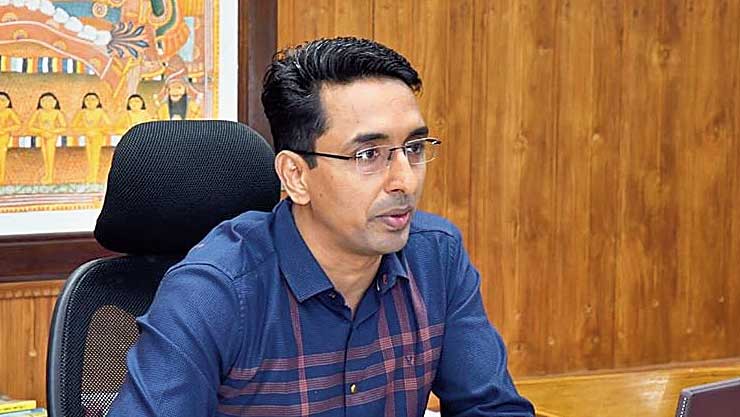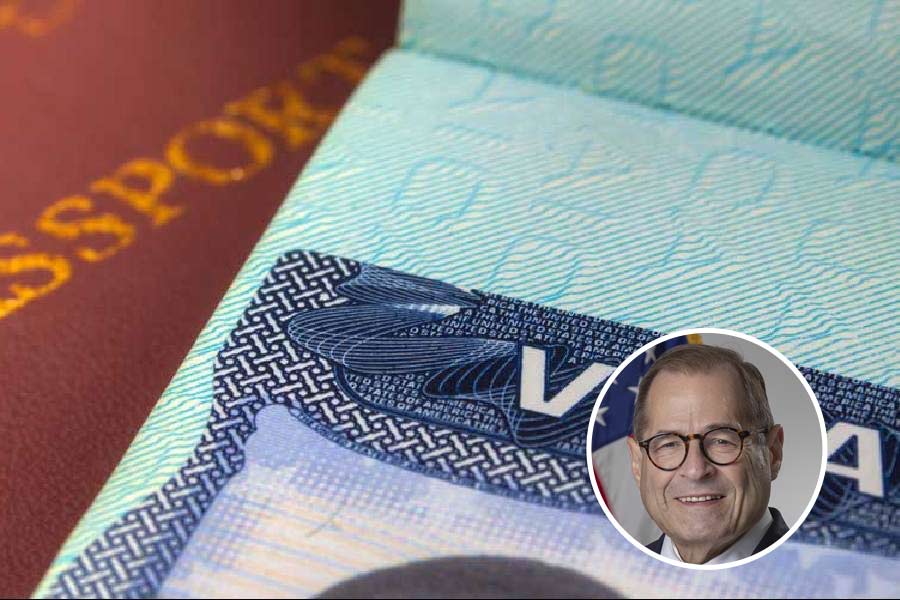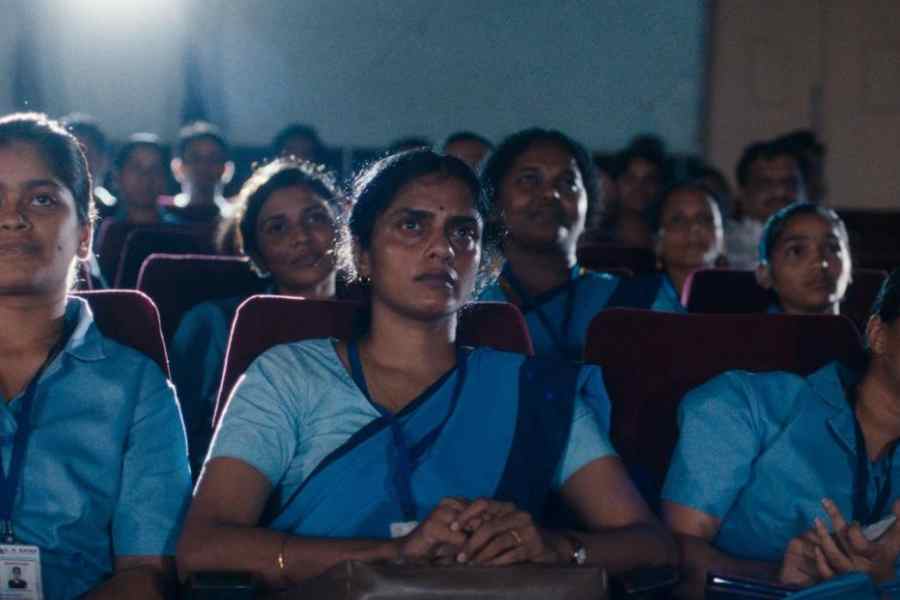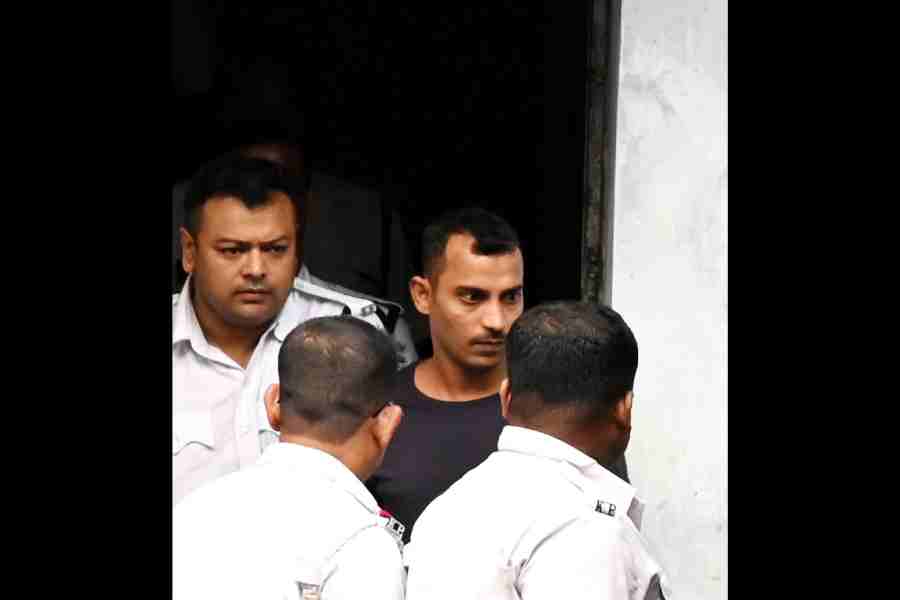Date: 29/02/2020, Time: 10.30 to 11.30, Place: Hotel Aryas on Kuthattukulam-Muvattupuzha Road.
Twenty-seven such information capsules retrace the steps of a family ever since they landed in Kerala from Italy, culminating in the box that says: “Admitted to hospital (06.03.2020).”
The route map spread over a week chronicles the enormous challenge just three persons have mounted for the coronavirus-fighters of Kerala after the family allegedly slipped out of an airport without volunteering information that they had started out their journey from the outbreak-affected Italy two week ago.
Officials have painstakingly mapped the virus-affected family’s movements over seven days since returning to Pathanamthitta in south Kerala from Italy on February 29.

The route map that traces the steps of the virus-affected family in Kerala Sourced by Correspondent
The map has been drawn up to facilitate smoother tracking of “contacts”.
“So far, around 60 people have called our control centre to inform us that they were at one or the other place at the various times mentioned in the route map. We expect more (people to contact us),” Pathanamthitta collector P.B. Nooh, who led the team that prepared the map, told The Telegraph on Wednesday.
The administration has already tracked down 900 people who had come in contact with the family. It is possible that the 60 are among the 900.
But the map alerts everyone who had been at a particular place and time when the family also was there to the possibility of risk and offers them a chance to get examined by doctors.
The map drawn up by the Pathanamthitta district administration based on enquiries with the family’s acquaintances and local people marks out the public places — along with time stamps — that the trio had visited, including hotels, a church, a bank, a post office and a hypermarket.
The map begins with a breakfast joint near Kochi airport, where the three had stopped on February 29.
Then they travelled 200km by road to their affluent hometown of Ranni in Pathanamthitta. Every subsequent public appearance till their forced hospitalisation on March 6 is recorded on the map.
The map is being given wide coverage on media and circulated on social media for people to figure out if they had come in contact in any way with the family and report immediately to the district administration. Thanks to the wide publicity, some mistakes were discovered on the map, which have been rectified.
The family — a couple and their grown-up son — has been accused by the Kerala government of concealing their coronavirus risk status from the helpdesks at the airport and have eventually passed on the infection to eight persons, including the 86-year-old mother of the woman in Kottayam whose condition was stated to have turned critical in hospital on Wednesday.
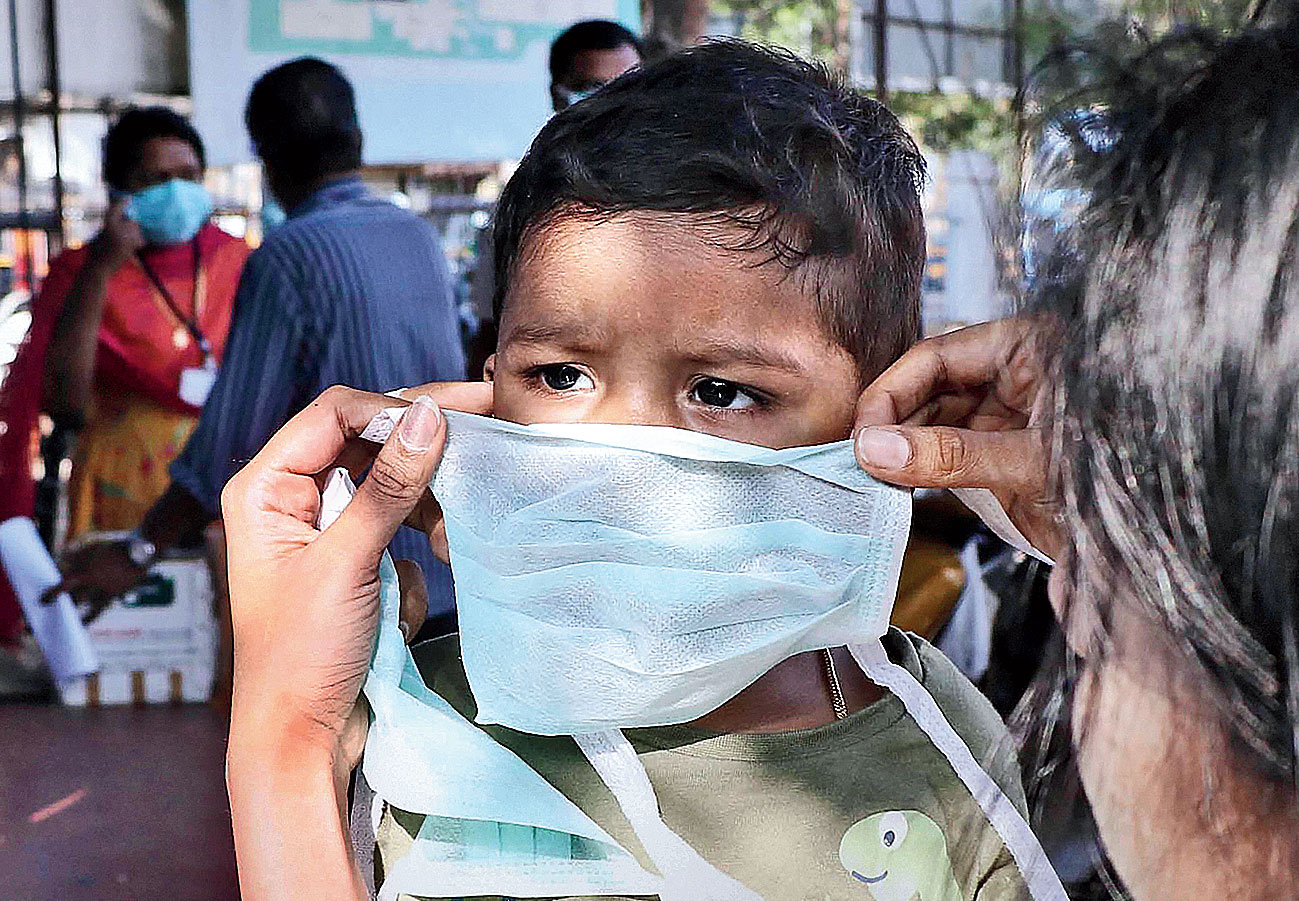
A parent places a medical mask on a child as a precaution at a hospital in Thrissur, Kerala, on Friday. (PTI)
The map has called into question many of the claims made by the son in an audio message he circulated on social media from hospital.
While Kerala has considerable experience in tracing contacts of infected persons with the commendable handling of two outbreaks of the Nipah virus in 2018 and 2019, the Pathanamthitta administration realised that there could be people who could be reluctant to come forward or unaware that they might have come in contact with the family.
“We had already traced some 900 people who had come in contact with the family before we had this idea to release a route map,” Nooh said.
The identities of the 60 callers are being analysed to see if they are already on the list of 900 contacts.
“Once we establish that a caller is outside that list (of 900) we will quickly move into the next stage of the operation, that is the treatment part,” Nooh said.
He, however, made it clear that having been at the same place with the carriers of the virus does not mean the contraction of the infection.
“We have to see if they are primary contacts (who spoke, shook hands or came in close contact with the family). They could just be secondary contacts who were at the place but had no real contact with the family. But we need to know who all were around,” Nooh said.
Working in coordination with the district health department, the Pathanamthitta administration will take a call on how many of the contacts should be home-quarantined and how many should be hospitalised.
The route map for the family from Italy has been named P1 Cluster. Another map, named P2, traces the movements of seven others in the district who contracted the virus from this family. Most of these seven are elderly persons with limited travel, so their movements were plotted on one map. The maps mention the phone numbers that need to be called.
“We have never tried this kind of a route map, not even during the Nipah outbreaks. We basically had only a reference (point) that a route map could do the trick of finding more contacts, and I should say it is working,” said Nooh, one of the most popular young civil servants in Kerala.
It is evident from the route map of the P1 Cluster that the family had visited several public places, something the couple’s son had denied.
Between 9.30pm and 11pm on March 1, the family had been at Suresh Hotel in Ranni. The following day between 11am and 11.30am they were at the post-office at Pazhavangadi in Ranni.
The same day they also had been at the Knanaya Church in Pazhavangadi between 11.30am and 12 noon.
The family had also visited a super market, a hyper market, a bakery, a jewellery store, a currency exchange office and the district police chief’s office.
They were eventually hospitalised on March 6 after two relatives who live in their neighbourhood went to a hospital with fever and spoke about the family from Italy.
Collector Nooh felt things were improving because of the massive operation to contain the disease. “Of the 28 people hospitalised in Pathanamthitta, 10 tested negative today. But we have a long way to go,” he said.
Fourteen people across Kerala have tested positive for the coronavirus.

